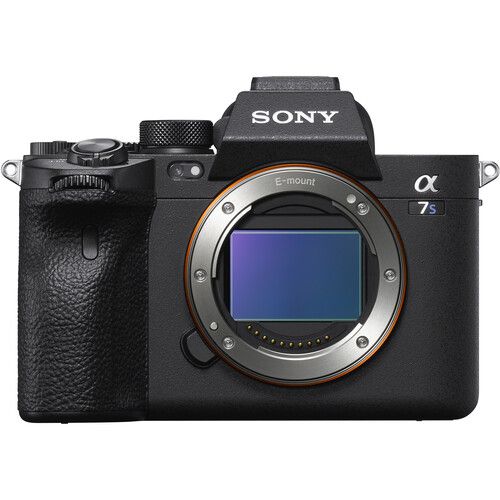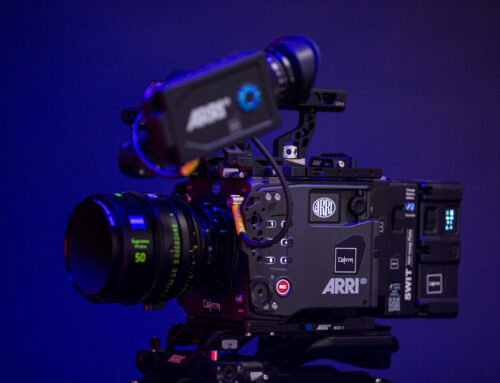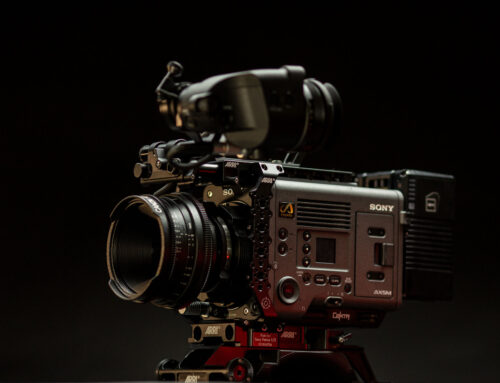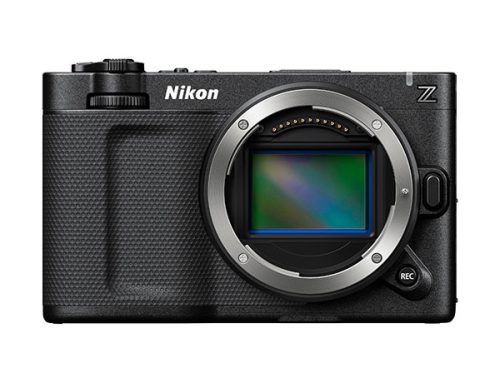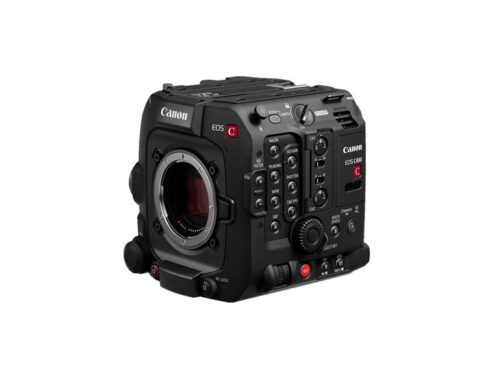Imagination in Motion
The Sony A7S III Full-Frame Mirrorless Camera takes the Sony Alpha series to a whole new level of full-frame movie expression. Іt’ѕ еquірреd wіth а new Ехmоr R 12МР Full Frame ВЅІ Ѕеnѕоr which has been paired with the nеwlу dеѕіgnеd ВІОNZ ХR Рrосеѕѕіng еngіnе. This prоvіdеѕ uр tо 8х fаѕtеr реrfоrmаnсе оvеr рrеvіоuѕ mоdеlѕ, reduced rolling shutter, 15 stops of dynamic range, extra-strong image stabilisation, ultra-low-noise & exceptional low light performance.
Іt’ѕ vіdео сараbіlіtіеѕ offer up to 4К 120Р (4:2:2 10bіt) rесоrdіng аnd FНD 240Р fоr ѕtunnіng ѕlоw-mоtіоn video. New versions of XAVC feature the addition of HEVC/H.265 encoding or ALL-I encoding. Improved colour science which draws inspiration from Sony’s FX9 & VENICE cameras with the ability to shoot S-Log3 & S-Gamut3.Cine for better colour matching.
Іt’ѕ еquірреd wіth аn іnсrеdіblе 759 роіnt оn-ѕеnѕоr рhаѕе dесіѕіоn АF wіth rеаl-tіmе еуе trасkіng іn bоth vіdео аnd ѕtіllѕ. The camera also features a full size HDMI output capable of outputting 16bit RAW to compatible recorders! Тhіѕ саmеrа dеmоnѕtrаtеѕ Ѕоnу’ѕ аbіlіtу tо рrоduсе ѕtunnіng іmаgе quаlіtу аnd рrоfеѕѕіоnаl реrfоrmаnсе іn оnе bоdу.
New image sensor with double the readout speed
The newly developed back-illuminated full-frame Exmor RTM CMOS sensor, with 12.1 effective megapixels13, boasts a readout speed up to twice as fast as that of the α7S II, along with high sensitivity and wide dynamic range. An advanced colour filter array boosts colour reproduction accuracy, while focal plane phase-detection AF enables substantial increases in autofocus stability and precision, all of which contribute to outstanding image quality.
New image-processing engine with up to 8x the processing performance
The BIONZ XRTM image-processing engine boasts a performance level up to eight times that of the previous processor, minimising latency while markedly improving real-time processing capabilities for both movies and stills. The engine performs real-time processing of AF, image recognition and image-quality adjustments, while also handling data transfer, user interface and other camera operations.
High sensitivity, wide dynamic range
The full-frame 12.1-megapixel14 configuration enables high sensitivity with low noise throughout the camera’s sensitivity range by optimising the output signal from the sensor. The standard ISO range is 80-102400, which is further expandable to 40-409600 (80-409600 for movies). The dynamic range is an impressively wide 15 stops15, for beautiful, true-to-life images without blown highlights. Together, the camera’s high sensitivity and wide dynamic range expand your creative freedom during shoots.
Full-frame 4K recording at 120p
Full-frame 4K recording at 120fps with autofocus is possible thanks to the high-speed readout capabilities of the new image sensor working in tandem with the newly developed, powerful BIONZ XR processor. This high image-quality 4K, with full-pixel readout without binning, allows for clear post-produced slow motion (up to x5 slower than real time)17, as well as bokeh effects typical of full-frame cameras, all with smooth, high-precision autofocus. Despite the α7S III’s compact size, it provides impressive scope for your creativity.
Recording movies with 10-bit depth and 4:2:2 colour sampling
The camera is capable of performing 4K internal recording with 10-bit depth and 4:2:2 colour sampling when using either Long GOP or All Intra compression. This makes it possible to push your colour grades further, stretching video out for ultimate HDR realism while still retaining natural gradation, for true editing freedom.
All-Intra internal recording
In addition to Long GOP inter-frame compression, the α7S III supports internal intra-frame (All-Intra) recording18 for the first time in an α-model body, where each frame is recorded independently at a high bitrate of up to 600Mbps. This can be useful for certain types of shoots as it allows maximum flexibility in post-production editing. [1] All-Intra (All-I) [2] Long GoP [3] Group of Pictures.
HEVC codec with high compression efficiency
Available for the first time, XAVC HS format recording using the MPEG-H HEVC/H.265 codec roughly doubles the compression efficiency. Compared to a normal 4K XAVC S format, XAVC HS allows for detailed 10-bit video with 4:2:2 colour sampling at comparable or lower data rates, delivering even better image quality as well as manageable file sizes.
16-bit RAW data output
Facilitating improved image quality and more flexible and efficient editing in post production, the camera supports 16-bit RAW data output to an external recorder via HDMI, for the first time in the α series. The output is full-frame 4264 x 2408 (16:9 aspect ratio) 16-bit data from the image sensor, with a choice of frame rates (60p/50p/30p/25p/24p).
S-Log2 and S-Log3 with 10bit 4:2:2 support
S-Log2 and S-Log3 gamma curves are available, with S-Log3 designed for better reproduction of gradations from shadows to the mid-grey range (18% grey), enabling a dynamic range of up to 15 stops15. Three colour gamut settings (S-Gamut, S-Gamut3, and S-Gamut3.Cine) are provided, and the latter two settings make it easier to match the colours of footage shot with Sony’s professional cinema cameras. Because the colours match, colour grading is easier in post-production editing, making it more convenient to use the α7S III along with other pro cameras.
Proxy recording for more efficient editing workflow
When shooting movies, low bit-rate HD proxy files can be recorded simultaneously with higher bit-rate formats such as XAVC S-I 4K, and these smaller proxy files can then be used for editing and previewing prior to final production delivery. This reduces computer load and allows faster and more efficient workflows. Proxy files can be captured in either 10-bit XAVC HS (1920 x 1080) or 8-bit XAVC S (1280 x 720) 21.
10-bit HLG picture profile
An HLG (Hybrid Log-Gamma) HDR picture profile, complete with the wide-gamut BT.2020 colour space, can be used for direct HDR (HLG) playback on compatible TVs. The result is true-to-life imagery close to what the naked eye can see, with detailed shadows and highlights, less blackout and less whiteout, all without the need for colour grading. In particular, 10-bit recordings reproduce a level of fine gradation and detail for extraordinary realism. [1] High flexibility to fine-tune images as desired (colour grading required) [2] Instant high-quality image (colour grading not required)
Enhanced movie image quality
Thanks to the improved capabilities of the α7S III’s new image-processing engine, colours and textures of foliage and human skin can be more consistently reproduced without over-dependence on light sources. Gradation rendering has also been refined, for better-looking skin tones and highlight roll-off in portraits. When shooting 4K, the new image sensor and processing engine reduce rolling shutter distortion to as little as one-third that of the α7S II.
Fast Hybrid AF for dependable focus during movie shooting
Inheriting technology and performance standards from Sony’s large-format FX9 pro camcorder, Fast Hybrid AF combines focal plane phase-detection AF with contrast-detection AF. This results in highly precise, smooth tracking of fast-moving subjects even over a wide range with a shallow depth of field, taking full advantage of Sony E-mount lenses’ smooth linear-motor focusing and power-zoom operations. Newly added AF Transition Speed and AF Subject Shift Sensitivity parameters allow more flexible focus control, as requested by professional users. Both allow preset settings to be recalled during recording by using a customisable button.
AF support in manual-focus mode
The camera’s autofocus support can be useful even when you’re primarily using manual focus. For full AF speed, half-press the shutter button or press the AF-ON button, as you would when shooting stills. Alternatively, slower, more cinematic AF transitions can be achieved by initiating AF via the touch focus feature or Real-time Eye AF via a custom button assignment, resulting in slow, smooth autofocus at the preset AF Transition Speed.
Game-changing tracking features to revolutionise movie shooting
Real-time Tracking and Real-time Eye AF make movie-making much easier. Touch Tracking initiates subject tracking with an intuitive touch to the LCD monitor, processing data on colour, pattern (brightness), distance (depth) and facial information to keep your subject in steady focus. You can then concentrate more fully on composition, which can be especially useful when you’re shooting solo or using a gimbal. Touch operations can be used to temporarily engage AF even when you’re shooting manually.
Active Mode optical image stabilisation for handheld shooting
Relying on a new high-precision stabilisation unit, gyro sensors, and optimised image stabilisation algorithms, the camera’s Optical SteadyShotTM Active Mode provides the precise degree of optical image compensation needed during movie shooting, even for 4K video22. With this unprecedented level of stabilisation it’s possible to shoot with the camera only, taking advantage of the compact size and mobility of the α system. [1] Track of camera shake [2] Standard [3] Active
New heat-dissipation design for extended recording times
The camera’s design has been optimised to prevent overheating even during extended recording sessions. A unique Sony Σ (sigma) shaped graphite-alloy heatsink is built into the image stabilisation unit, allowing the sensor to dissipate heat five times more effectively than in previous models23, while allowing it to move freely and avoiding interference with the stabilisation system.
Fast Hybrid AF for still shots
The Fast Hybrid AF uses a high-density array of 759 phase-detection AF points (covering around 93% of the imaging area) in conjunction with 425-point contrast-detection AF. Real-time Eye AF (for humans and animals) and Real-time Tracking features are also available for the first time in the S series. Advanced AF algorithms facilitate precise AF down to light levels as low as EV-624, for accurate focus even when the subject would be difficult to see clearly with the naked eye.
Two CFexpress Type A-compatible media slots
The camera’s two media slots are compatible with new CFexpress Type A cards as well as SDXC/SDHC cards supporting UHS-I and UHS-II speed classes. CFexpress Type A cards are the next standard for compact storage with fast write/read speeds suitable for both high-speed continuous still shooting and 4K movie recording at high bit rates. They are capable of quickly clearing camera buffers even when high volumes of still image and movie data are being generated.
High-definition 9.44 million-dot13 electronic viewfinder
Boasting the highest resolution in its class28, the α7S III’s viewfinder rivals the resolution of the human eye. It provides category-leading 0.90x viewfinder magnification29, a 41º diagonal field of view, and a 25mm high eyepoint for clear, low-distortion viewing. Improvements in sealing greatly reduce the chance that even drastic ambient temperature fluctuations will cause interior condensation.
USB Power Delivery
The camera supports USB PD (Power Delivery), to enable continuous shooting for extended periods without draining the internal battery30. PD-compatible31 USB chargers and mobile batteries can be connected to the camera’s USB Type C® port, to supply power or to recharge the internal battery at 3 to 4 times the speed23 of conventional power supplies.

